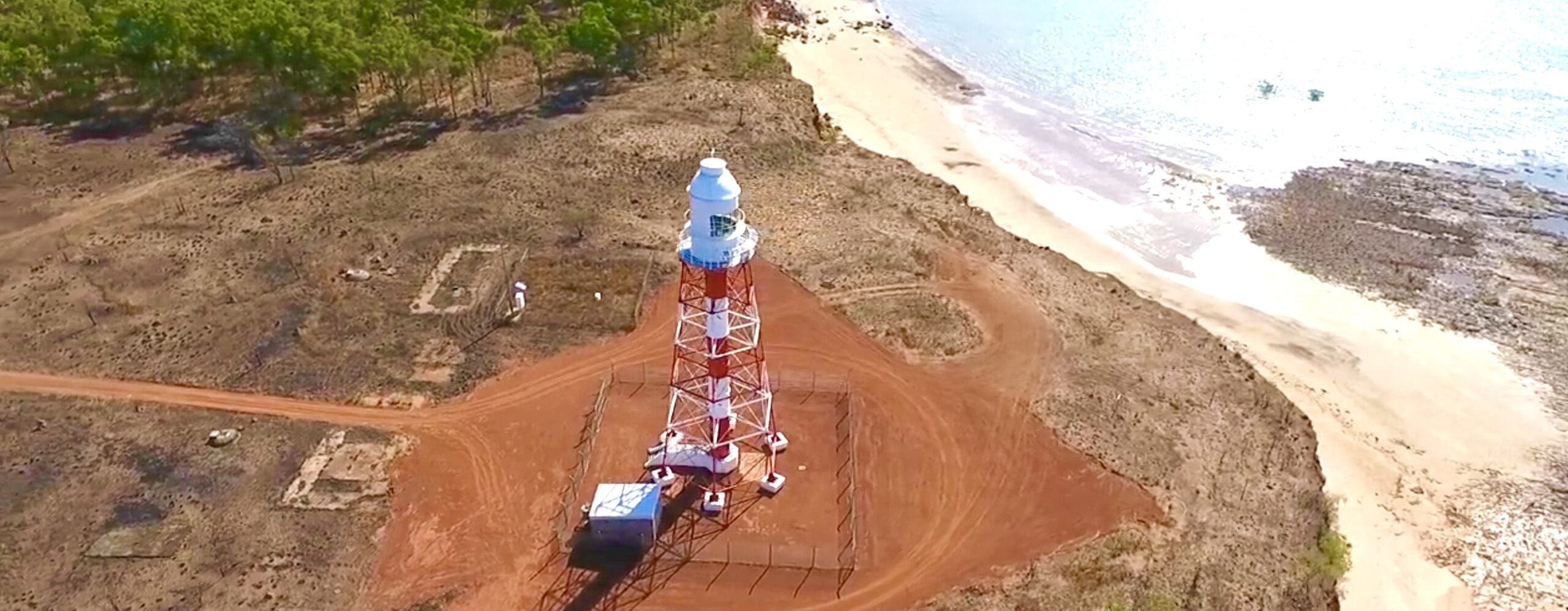
Point Charles Lighthouse is the Northern Territory’s oldest lighthouse and stands on a headland at the northern end of the Cox Peninsula 21 km northwest of Port Darwin.
Established in 1893, this pioneering wrought iron tower marked the beginning of systematic navigation aids in the Territory, guiding vessels through the treacherous approaches to Port Darwin where shallow waters, swift currents, and numerous uncharted shoals had claimed many ships throughout the 1880s.
The urgent need for a lighthouse at Point Charles became starkly apparent following devastating shipwrecks throughout the 1880s as vessels attempted to navigate the difficult approaches to Port Darwin. The Marine Board responded in 1888 by recommending lights be erected at strategic locations including Capes Fourcroy and Don and Points Emery and Charles. Funds for the Point Charles and Point Emery lights were raised by loan, demonstrating the critical importance placed on protecting maritime traffic to the developing northern port.
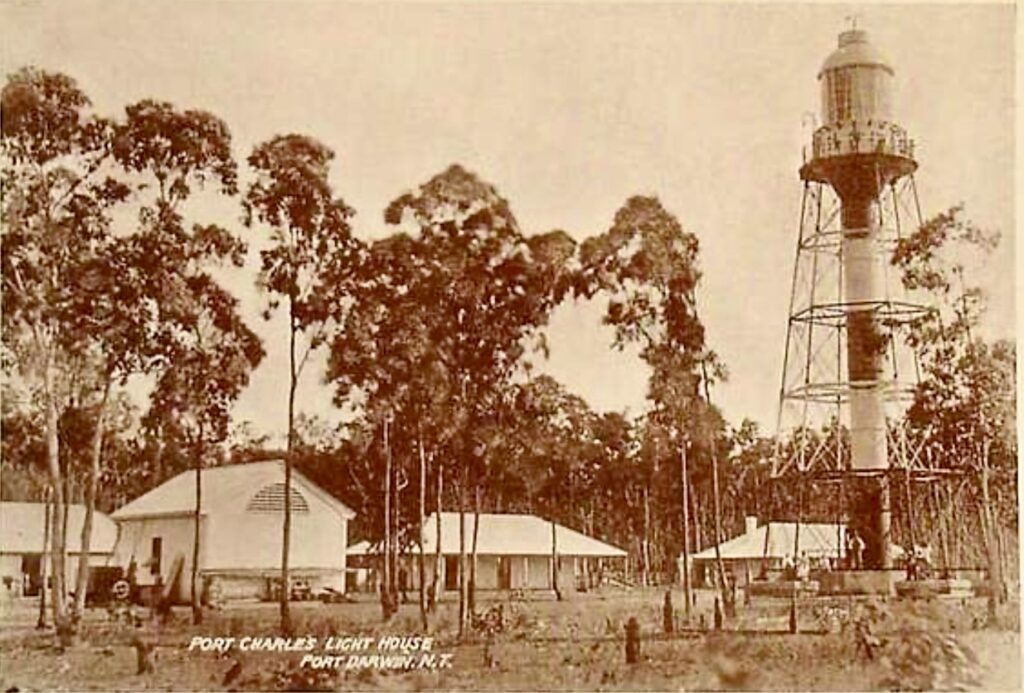
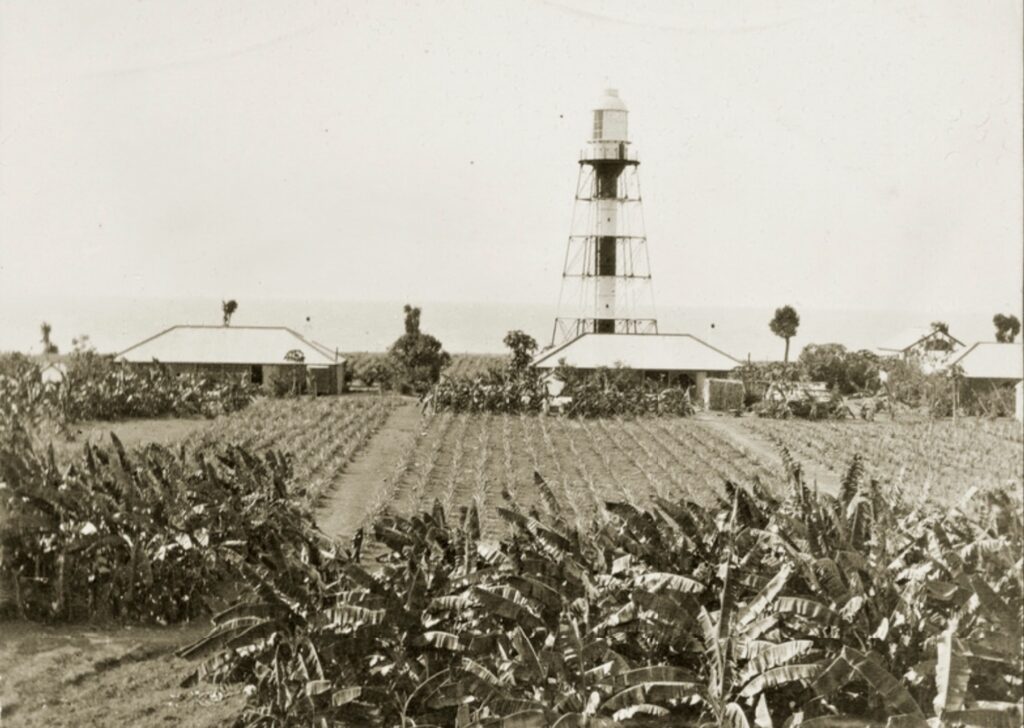
The construction represented an innovative prefabrication approach typical of colonial lighthouse engineering. The contract went to Chance Brothers of Birmingham, England, who packed the lighthouse in crates and shipped it to Adelaide in 1891. The components were then transported aboard the SS Inaminka to Port Darwin, and after a short journey on the SS Airie to Point Charles, construction began in 1892. However, the rusty condition of the lighthouse when unpacked caused delays beyond the planned 8 September 1892 completion date. The 92-foot wrought iron tower, consisting of a central tube almost two meters in diameter with struts and braces, was officially opened on 1 February 1893 by Charles James Dashwood, the Government Resident of the Northern Territory.
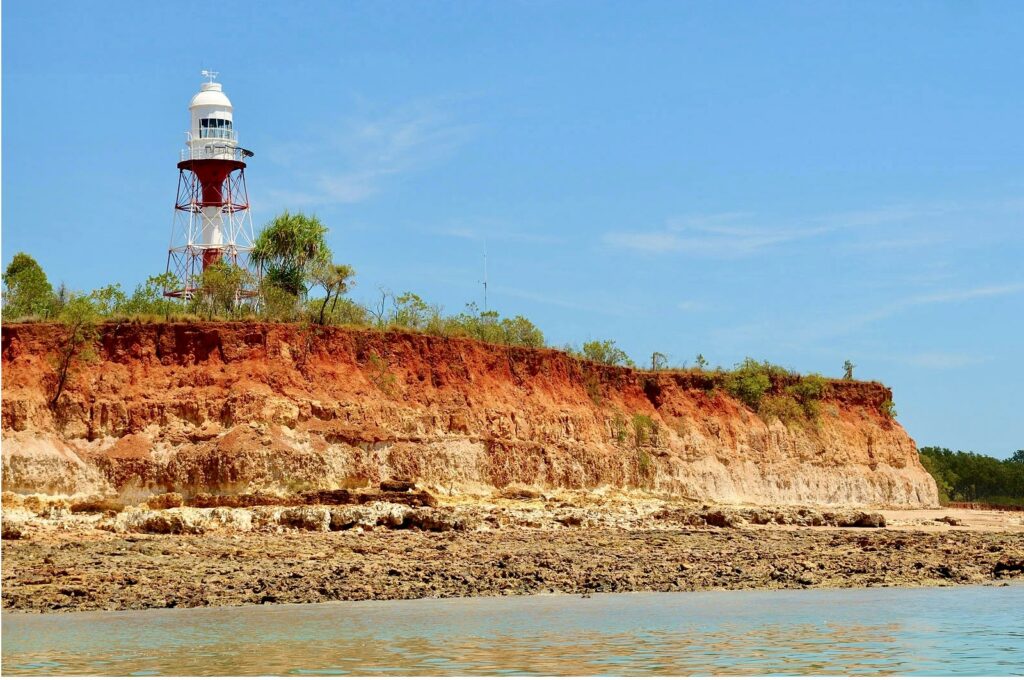
Life for the lighthouse keepers and their families involved maintaining the sophisticated optical system in the tropical climate. Several galvanised iron cottages with wooden floors and verandahs housed the keepers who tended the revolving first-order dioptric lens powered by a vapourised kerosene burner producing 100,000 candela. An insect problem in the tropical environment forced replacement of the original burners with “Trinity” burners in 1894, illustrating the unique challenges of northern lighthouse operations.
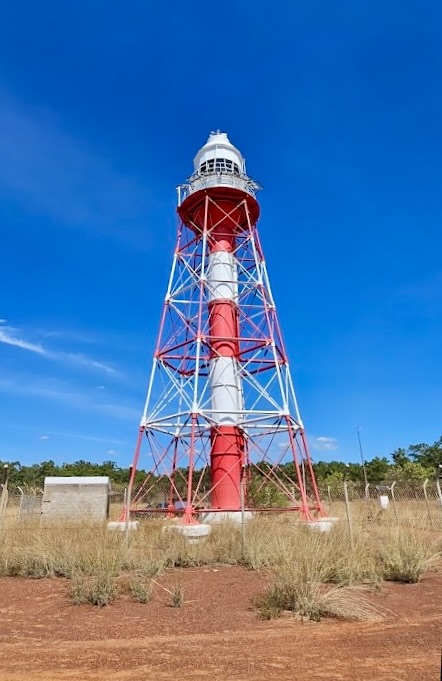
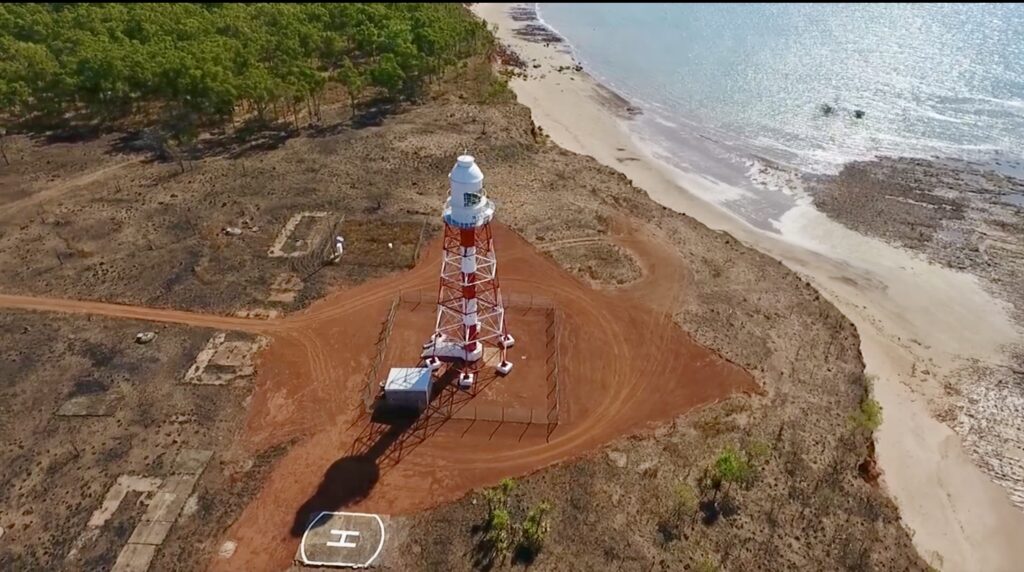
The operational history spans dramatic technological changes and remarkable resilience. In 1932, the lighthouse transitioned to acetylene gas and automated operation, being demanned in 1933 and continuing automatic operation until 1971. When Radio Australia installed tall transmission masts with powerful lamps visible for 22 nautical miles in 1965, the lighthouse became obsolete and was extinguished in 1971, serving only as a day marker. However, on Christmas Eve 1974, Cyclone Tracy devastated the area, causing extensive damage to the Radio Australia masts while the lighthouse survived almost intact. Within a month, a small battery-powered lamp was reinstalled, demonstrating the tower’s superior resilience. The lighthouse was electrified in July 1982 with a powerful 1,000,000 candela lamp installed, later replaced by more economical solar-powered lighting. AMSA undertook a major refurbishment in 1999 as shown in the photos below.
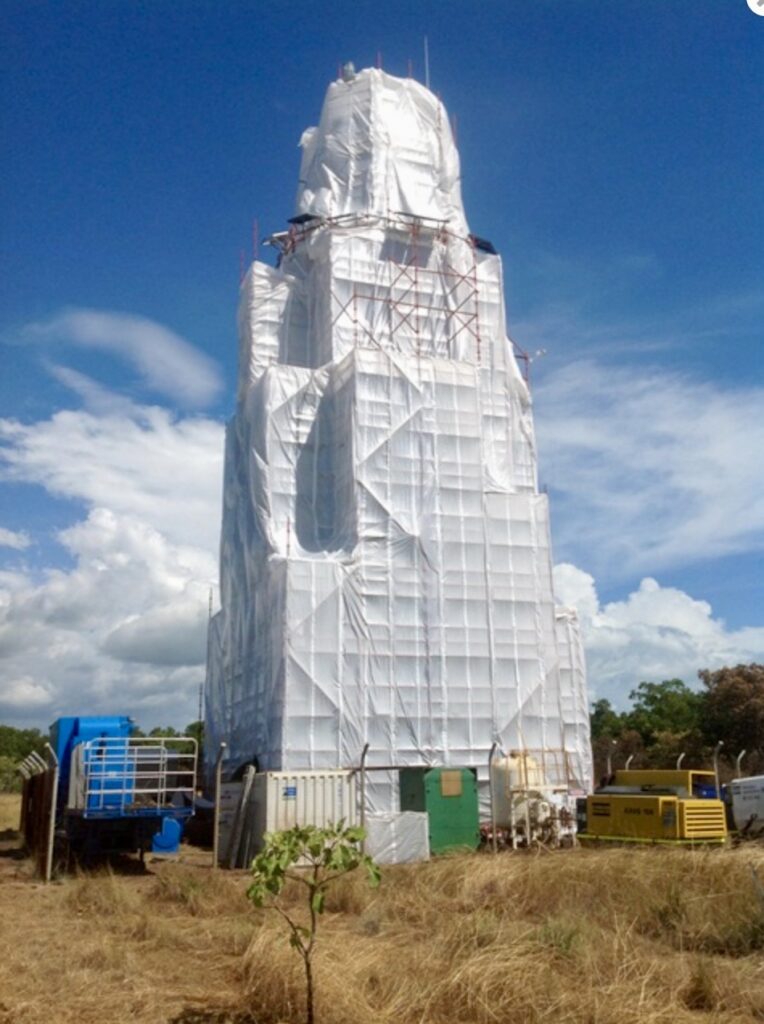
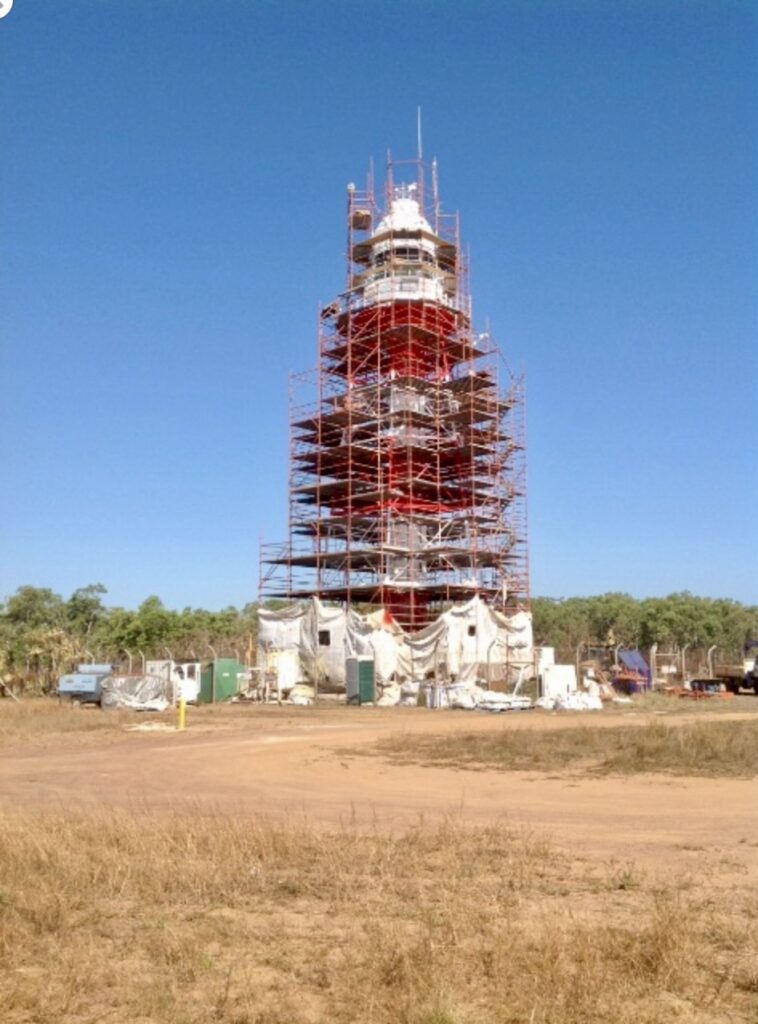
Today, Point Charles Lighthouse continues operating under the Australian Maritime Safety Authority, which accesses the site by helicopter. Listed on the now-defunct Register of the National Estate in 1986, the lighthouse stands as a testament to nineteenth-century engineering excellence and cyclone-resistant design. The Radio Australia facility closed in July 1997, and road access to the lighthouse is available via agreements with indigenous landholders.
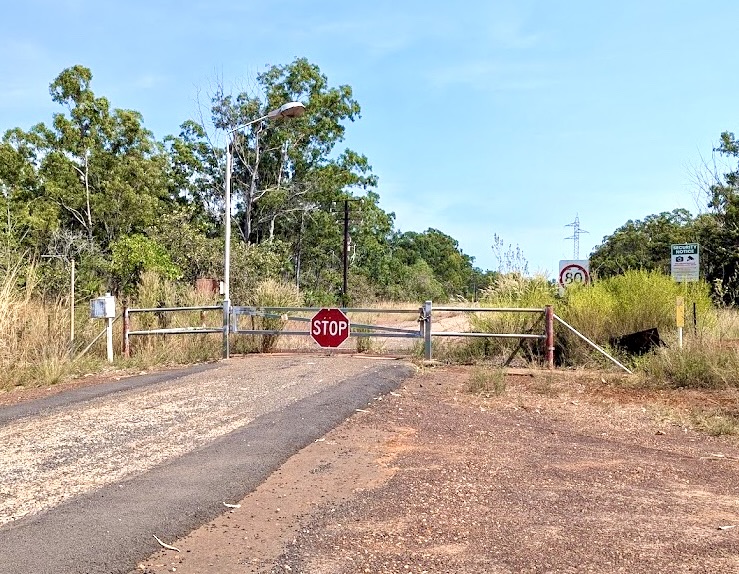
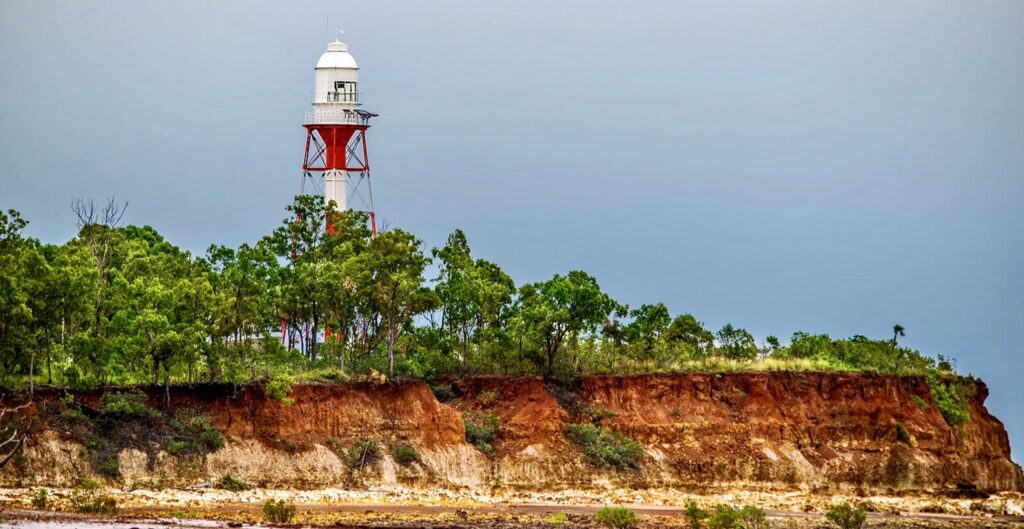
Technical Specifications – Point Charles Lighthouse
First Exhibited: 1 February 1893
Status: Active (Automated 1933)
Location: Point Charles, northern end of Cox Peninsula, 21 km northwest of Port Darwin, Northern Territory
Construction: 1892-1893, oldest lighthouse in Northern Territory
Construction Material: Prefabricated wrought iron from Chance Brothers, Birmingham, England
Tower Height: 92 feet (28 meters)
Tower Design: Central tube almost 2 meters in diameter with struts and braces, spiral staircase to lantern room
Focal Height: 36 meters (118 feet)
Keeper Accommodation: Several galvanised iron cottages with wooden floors and verandas
Original Light Source: Vapourised kerosene burner, 100,000 cd intensity
Original Lens: Revolving 1st order dioptric lens
Original Light Characteristic: White flash every 30 seconds with red and green sectors (Fl.W.R.G. 30s)
Original Range: 17 nautical miles (31 km), visible from Darwin
Automation: 1933 (acetylene gas/carbide lamp)
Decommissioned: 1971 (obsolete due to Radio Australia masts)
Recommissioned: 1975 (following Cyclone Tracy damage to radio masts)
Electrification: July 1982 (1,000,000 cd lamp installed)
Current Light Source: Solar-powered 12-volt halogen lamp, 37,000 cd intensity
Current Light Characteristic: White flash every 5 seconds (Fl.W. 5s)
Current Range: 17 nautical miles (31 km)
Current Operator: Australian Maritime Safety Authority
Heritage Status: Listed on Register of the National Estate (1986)
Notable Features: Oldest lighthouse in Northern Territory; prefabricated design from England; survived Cyclone Tracy while Radio Australia masts destroyed; recommissioned after 1974 cyclone; burner replacement in 1894 due to insect problems; shipped via Adelaide to Darwin in crates; built following multiple 1880s shipwrecks; helicopter access by AMSA
Disclaimer: Due to the need to get across the “Top End” in the dry season (which usually ends in October), and to spend time in the outback on the way north I have rushed the first stage of Act 3. In order to document the lighthouses I’ve visited I’ve enlisted the help of Elon Grok and A.I. Claude to help on these Lighthouse Stories. Despite their claims of infallibility I’ve found some of their facts not to be accurate and would welcome any corrections, which they will learn from! I have also sourced a few photos from the public domain (i.e. Dr Google) to compliment the shots I’ve taken on my travels. I would like to concentrate on telling my personal experiences and thoughts as I travel around and intend to reedit these lighthouse stories when I have time.